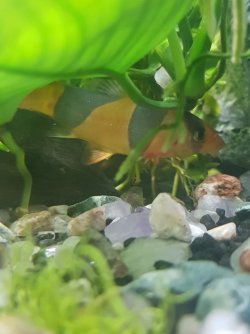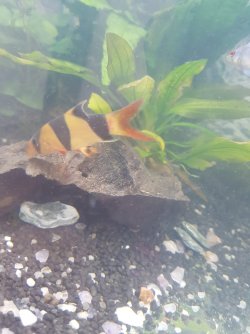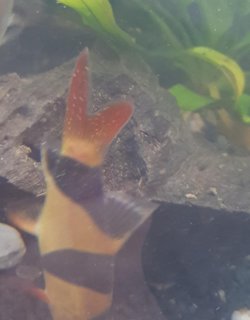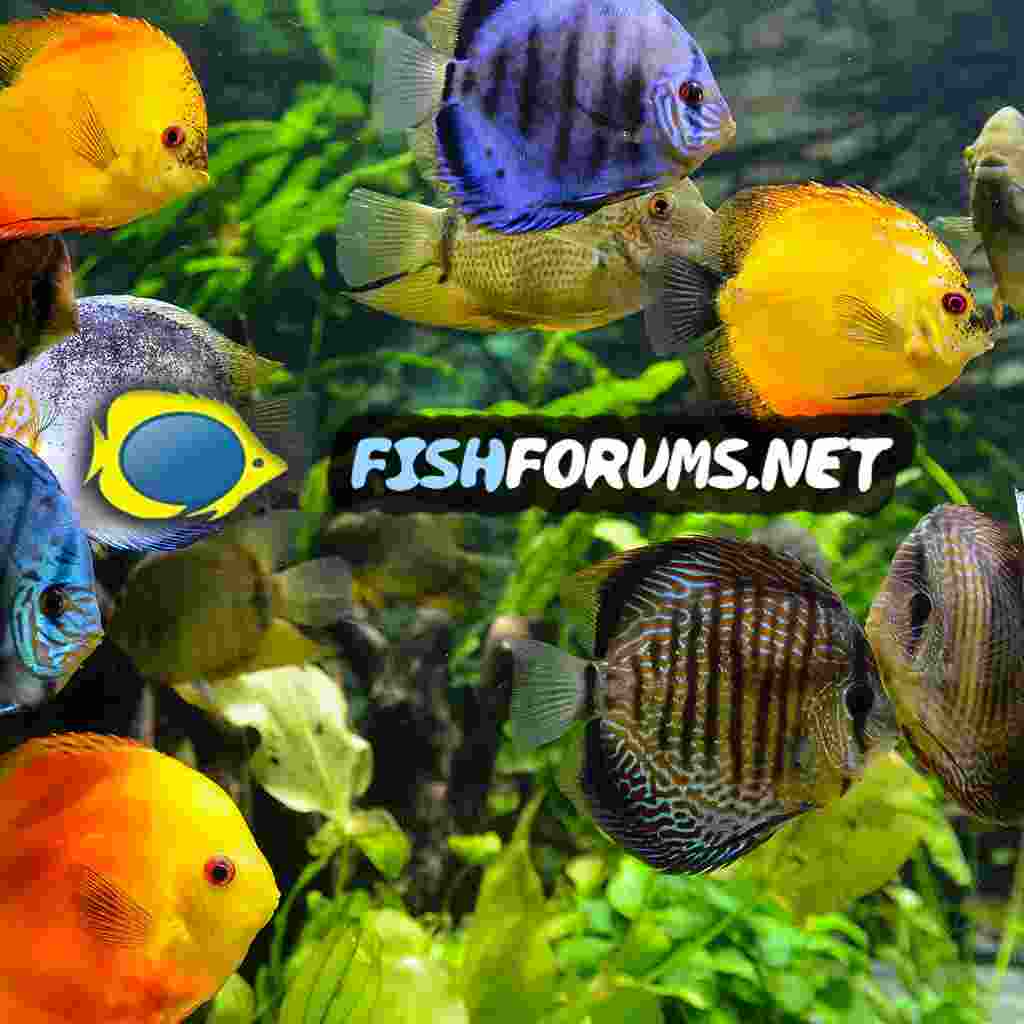I am getting very annoyed and rather disheartened now.
150L
ammonia 0ppm
nitr 0ppm
pH 7.5 ish
temp 30 degrees Celsius
live plants, bogwood and resin rocks, all in gravel (changing into sand next week).
Part of the plants and decor removed to make vacuuming easier without having to disturb the gravel too much, still plenty of places to hide
5 gouramis
3 clown loaches*
2 bristlenose plecos
1 ram
some shrimps
a few nerite snails but i doubt they will last long with my loaches
I have previously discovered ich on my fish and I followed a great advice here - bumped temp to 30 degrees, vacuumed gravel daily, made sure new water was the same temperature and dechlorinated. 2 weeks in I had to move houses. That went fast, fish were moved in a 65L plexi with an air stone and lots of plants to hide in, new tank was set up incredibly fast and roughly 60% of the water was from the old tank. I do believe that the stress from that played a big part in this issue, although I did my best to make it as smooth as I was able to.
My gouramis are clear, no signs of spot anymore. The Duke who was the worst is spot free, ram had a few but all are gone now. My loaches however.... They used to have an odd spot here and there. A few days ago those little f%£"%@s decided to re-decorate the tank and disturbed the gravel to the point where they got to the soil substrate. All for a snail. Anyway, ammonia on 0ppm, water settled down, I vacuumed some of the dirt out and covered it with gravel + wood. Is it possible that by digging that deep they exposed themselves to more ich? I have 3 of them, all 3 have spots but one is really bad now and flashing all the time. I don't mind keeping the tank at 30 degrees and carry on vacuuming but I keep doubting that method now, is there anything else I can do? I am going to do all I can to keep this lil dude alive. Not the greatest photos, impossible to see them still unless they sleep / play dead but it's too dark usually
In case any meds are recommended - I live in UK, not everything is available. I know USA seems to have a wider variety.
I own:
King British White Spot Control
Interpet Anti White Spot
API Aquarium salt
API Pimafix**
API Melafix**
* Yes, I am aware loaches grow big. They will be upgraded into a bigger tank soon and when they reach the size I am no longer able to support they will be rehomed with help from my local LFS who I already asked for all options before I bought the fish
**I have gouramis, I am aware of the caution that needs to be taken with those. Lots of meds were given to me as a 'first big fish tank' gift, so I got a whole lot that wasn't even opened yet. Just chilling in the first aid box
150L
ammonia 0ppm
nitr 0ppm
pH 7.5 ish
temp 30 degrees Celsius
live plants, bogwood and resin rocks, all in gravel (changing into sand next week).
Part of the plants and decor removed to make vacuuming easier without having to disturb the gravel too much, still plenty of places to hide
5 gouramis
3 clown loaches*
2 bristlenose plecos
1 ram
some shrimps
a few nerite snails but i doubt they will last long with my loaches
I have previously discovered ich on my fish and I followed a great advice here - bumped temp to 30 degrees, vacuumed gravel daily, made sure new water was the same temperature and dechlorinated. 2 weeks in I had to move houses. That went fast, fish were moved in a 65L plexi with an air stone and lots of plants to hide in, new tank was set up incredibly fast and roughly 60% of the water was from the old tank. I do believe that the stress from that played a big part in this issue, although I did my best to make it as smooth as I was able to.
My gouramis are clear, no signs of spot anymore. The Duke who was the worst is spot free, ram had a few but all are gone now. My loaches however.... They used to have an odd spot here and there. A few days ago those little f%£"%@s decided to re-decorate the tank and disturbed the gravel to the point where they got to the soil substrate. All for a snail. Anyway, ammonia on 0ppm, water settled down, I vacuumed some of the dirt out and covered it with gravel + wood. Is it possible that by digging that deep they exposed themselves to more ich? I have 3 of them, all 3 have spots but one is really bad now and flashing all the time. I don't mind keeping the tank at 30 degrees and carry on vacuuming but I keep doubting that method now, is there anything else I can do? I am going to do all I can to keep this lil dude alive. Not the greatest photos, impossible to see them still unless they sleep / play dead but it's too dark usually
In case any meds are recommended - I live in UK, not everything is available. I know USA seems to have a wider variety.
I own:
King British White Spot Control
Interpet Anti White Spot
API Aquarium salt
API Pimafix**
API Melafix**
* Yes, I am aware loaches grow big. They will be upgraded into a bigger tank soon and when they reach the size I am no longer able to support they will be rehomed with help from my local LFS who I already asked for all options before I bought the fish
**I have gouramis, I am aware of the caution that needs to be taken with those. Lots of meds were given to me as a 'first big fish tank' gift, so I got a whole lot that wasn't even opened yet. Just chilling in the first aid box







